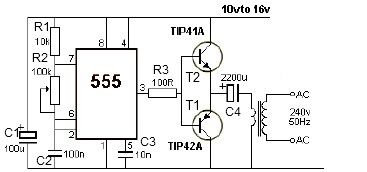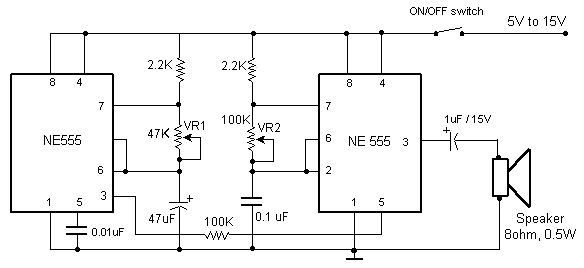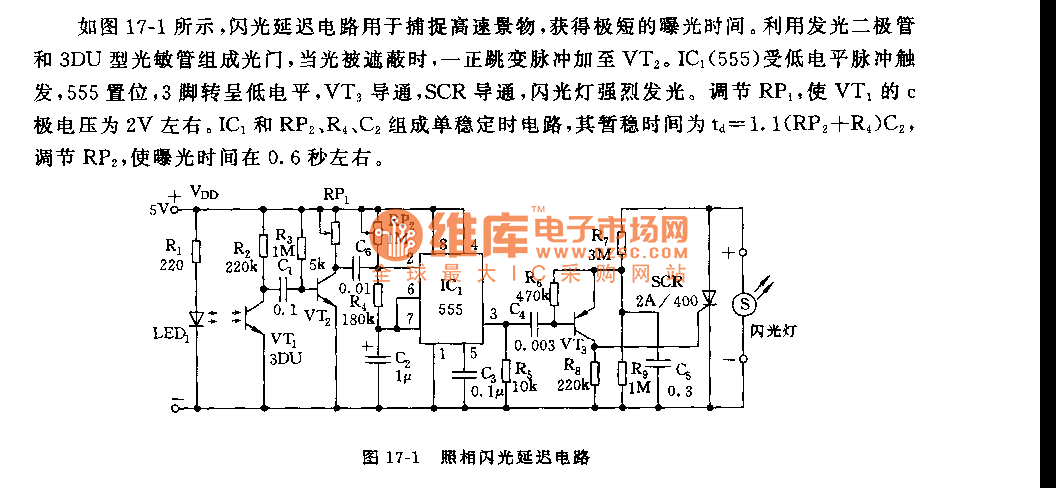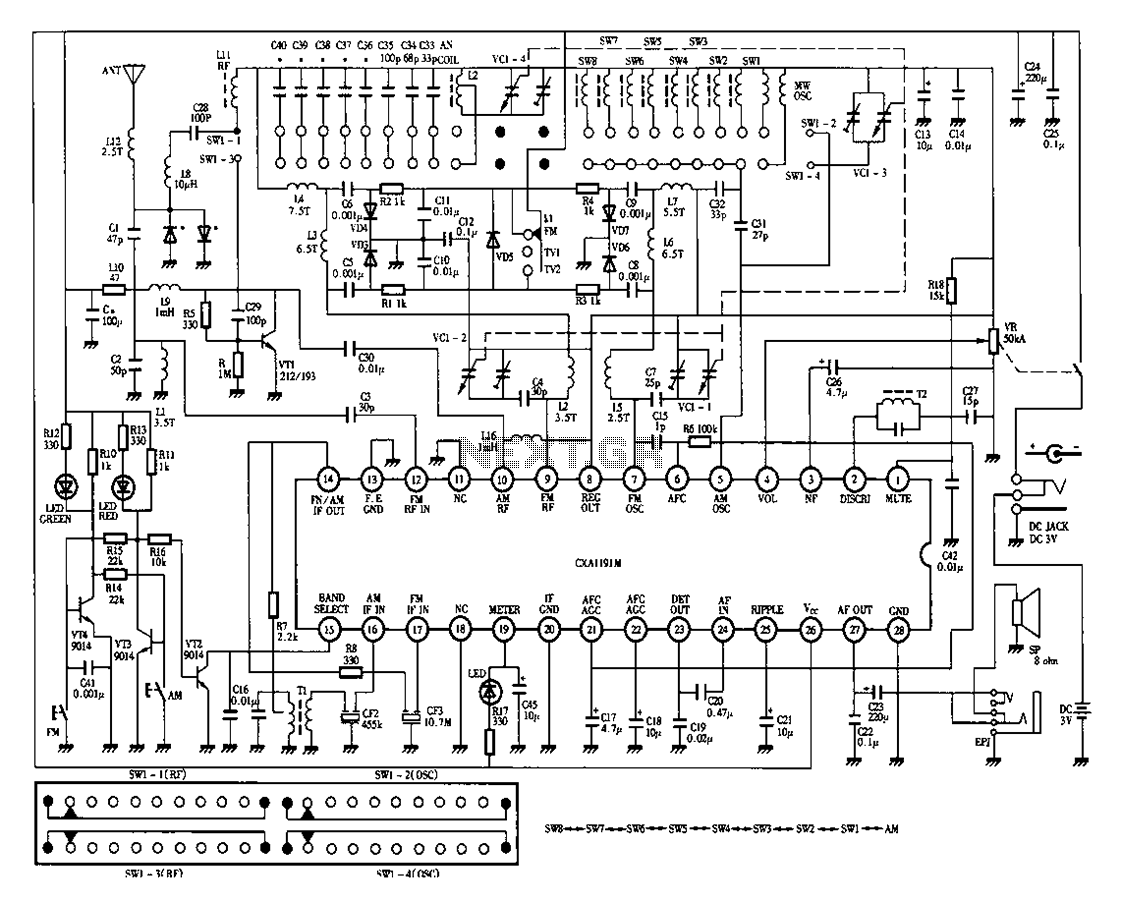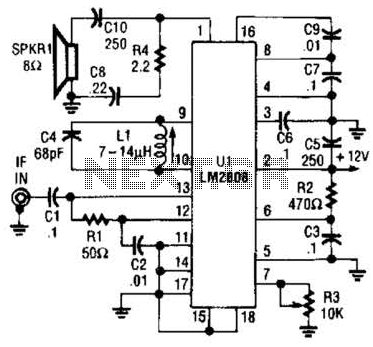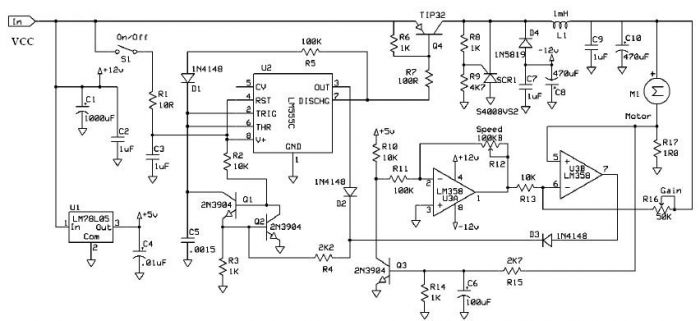
Police sirens sound with ic 555

Many people might be excited by the sound of a siren, as it is often associated with emergency events such as accidents. However, one may wonder about the underlying mechanisms that produce this alerting sound.
The siren sound commonly used in emergency vehicles is generated by a specialized audio system designed to capture attention quickly and effectively. This system typically consists of a siren control unit, a power amplifier, and one or more loudspeakers.
The siren control unit generates the audio signal, which can be a continuous tone or a modulated sound pattern, designed to be distinctive and penetrating. The control unit is often microcontroller-based, allowing for programmable sound patterns that can be adjusted depending on the situation.
The power amplifier boosts the low-level audio signal from the control unit to a level suitable for driving the loudspeakers. This component is crucial, as it ensures that the sound can reach a significant distance, alerting pedestrians and other drivers to the presence of an emergency vehicle.
The loudspeakers used in siren systems are typically designed to handle high power levels and have a wide frequency response to reproduce the siren sound accurately. They are often mounted on the roof of the vehicle to maximize sound dispersion.
Additionally, modern siren systems may incorporate features such as automatic activation based on vehicle speed or proximity to certain locations, enhancing their effectiveness in alerting others during emergencies. The integration of these components into a cohesive system is essential for ensuring that the siren performs reliably in critical situations.Many a person will might excited with siren sound the all that ever hear. Because we will hear when there is an accident emergency event. But ever suspect that.. 🔗 External reference
The siren sound commonly used in emergency vehicles is generated by a specialized audio system designed to capture attention quickly and effectively. This system typically consists of a siren control unit, a power amplifier, and one or more loudspeakers.
The siren control unit generates the audio signal, which can be a continuous tone or a modulated sound pattern, designed to be distinctive and penetrating. The control unit is often microcontroller-based, allowing for programmable sound patterns that can be adjusted depending on the situation.
The power amplifier boosts the low-level audio signal from the control unit to a level suitable for driving the loudspeakers. This component is crucial, as it ensures that the sound can reach a significant distance, alerting pedestrians and other drivers to the presence of an emergency vehicle.
The loudspeakers used in siren systems are typically designed to handle high power levels and have a wide frequency response to reproduce the siren sound accurately. They are often mounted on the roof of the vehicle to maximize sound dispersion.
Additionally, modern siren systems may incorporate features such as automatic activation based on vehicle speed or proximity to certain locations, enhancing their effectiveness in alerting others during emergencies. The integration of these components into a cohesive system is essential for ensuring that the siren performs reliably in critical situations.Many a person will might excited with siren sound the all that ever hear. Because we will hear when there is an accident emergency event. But ever suspect that.. 🔗 External reference
